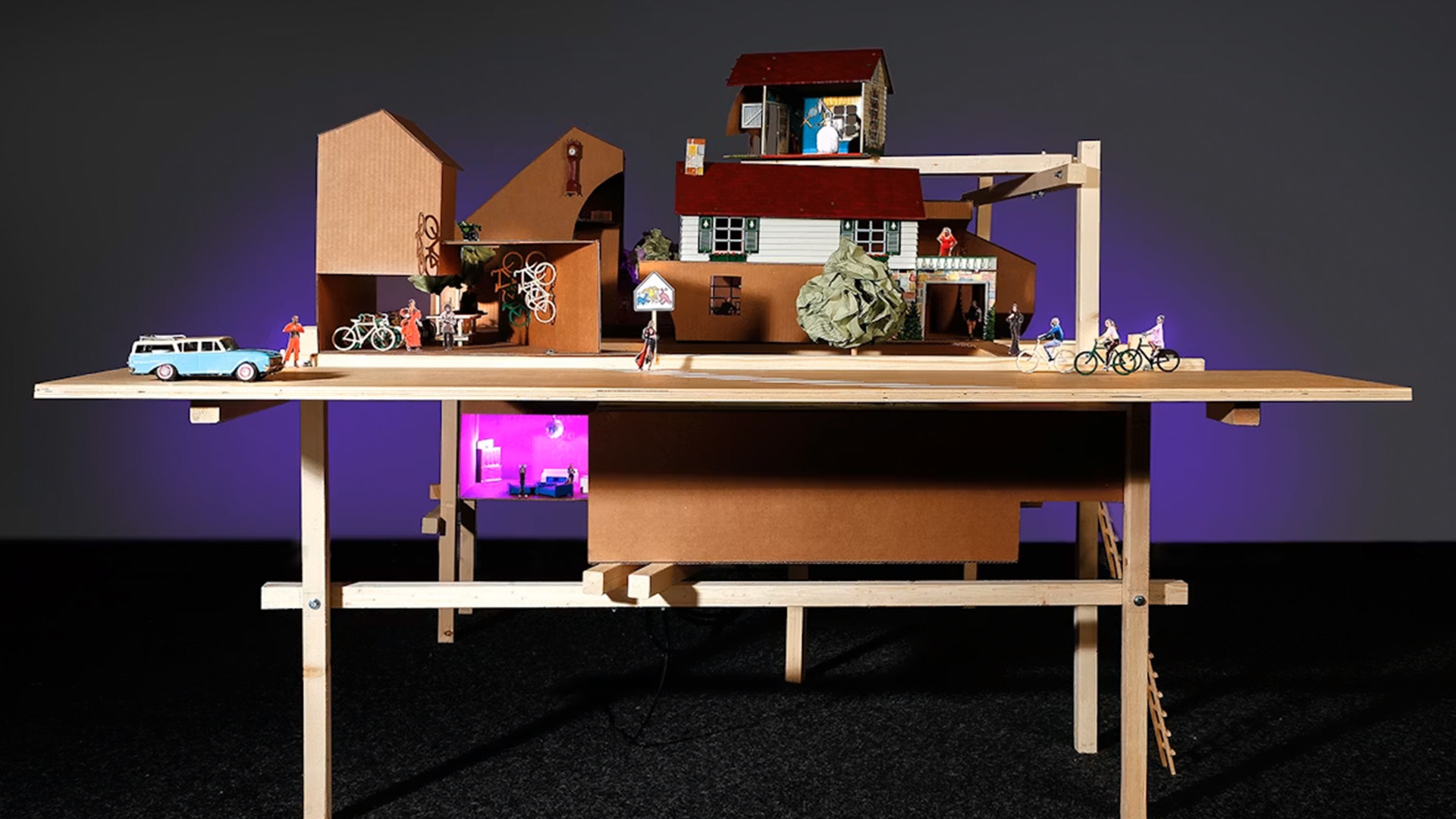Video reveals hoverbike that lets users fly "like a superhero"


American transportation firm Volonaut has released test footage of its Airbike, a personal aircraft resembling a flying motorcycle that uses jet engines to hover and glide through the air at speeds of up to 102 kilometres per hour.
Volonaut described the product as the "world's first flying superbike" – although for now, it can only remain airborne for up to 10 minutes at a time.

Instead of helicopter-style propellers, the Airbike is powered by multiple jet engines in a bid to ensure smoother flight and greater control.
"It feels like instantly becoming a superhero," said the company's founder Tomasz Patan, a self-taught engineer and designer who has tested the machine in a variety of contexts.
"It is a very smooth and powerful experience, just like in those dreams about flying," he told Dezeen.

Having previously developed a propeller-powered aerial vehicle called Jetson One, Patan saw the potential in using jet engines to create a product that rides more like a motorbike rather than an aircraft.
"It was something I always wanted to create since I was a kid – my very own compact personal flying device that can hover and has enough power to do what similar vehicles could do in sci-fi movies," he explained.

The Airbike's total mass is just 30 kilograms, which means it can be transported and manoeuvred by a single person.
The use of jet propulsion helps reduce the vehicle's mass and footprint, allowing the Airbike to navigate through tight spaces and safely hover even in case of partial failure, Volonaut claims.
Achieving the perfect balance between size and weight was the biggest technical challenge, according to Patan, requiring components to be manufactured using 3D-printing technologies and high-tech materials such as carbon and Kevlar composites.
The current prototype, revealed in a video featuring raw footage of both takeoff and landing, can carry a weight of up to 95 kilograms and can reach speeds of 102 kilometres per hour.
The vehicle can be powered using various fuel types, including diesel, jet fuel or kerosene, with a maximum flight time of 10 minutes, which Volonaut said it is working to increase.
Patan claimed that operating the Airbike is as easy as playing an arcade simulation game, with onboard computers linked to sensors taking care of stabilisation.

The machine is piloted using a fly-by-wire control system, which replaces traditional mechanical linkages with electronic signals and is hooked up to a flight computer.
The vehicle was designed to meet the "ultralight" classification as set out by the United States CFR Part 103 regulations, which requires aircraft to be single-seat and used only for recreation or sport.
The Airbike does not require a pilot's license and can be used by anyone outside of densely populated areas. Professionally led training will be provided to ensure that owners can operate the vehicle safely and responsibly.

Volonaut has stated that the Airbike will be produced in limited numbers, with preorders starting this month.
Other recent advances in the arena of vertical take-off and landing aircraft (VTOL) have focused largely on multi-passenger vehicles powered by electricity instead of petroleum.
Volkswagen, Rolls Royce and Hyundai are among the carmakers that have started developing prototypes for flying electric cars. Consumers should expect to see flying cars in the skies by 2030, Hyundai's chief executive for European operations told Dezeen in a 2021 interview.
The post Video reveals hoverbike that lets users fly "like a superhero" appeared first on Dezeen.





















































